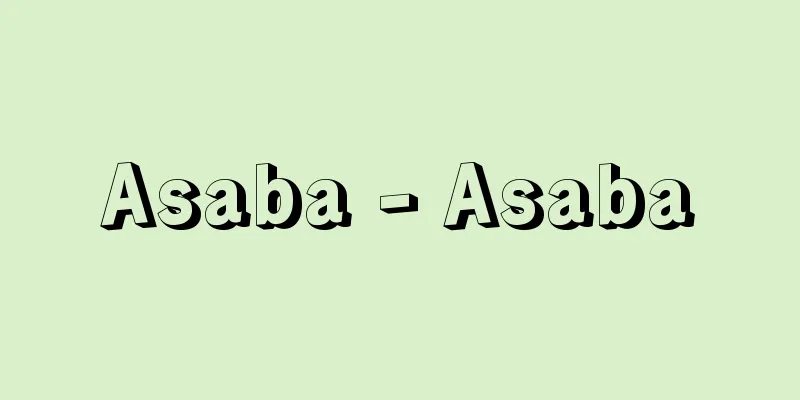Kannonji Castle

A mountain castle ( Yamajiro ) located in Omihachiman City, Shiga Prefecture (formerly Azuchi Town, Gamo County). It is a nationally designated historic site. It is one of the "100 Great Castles of Japan" selected by the Japan Castle Foundation. It is counted as one of the five great mountain castles in Japan, along with Gassan-Toda Castle (Yasugi City, Shimane Prefecture), Nanao Castle (Nanao City, Ishikawa Prefecture), Kasugayama Castle ( Joetsu City, Niigata Prefecture), and Hachioji Castle (Hachioji City, Tokyo). The castle was built on top of Kinugasayama (432.9m above sea level) and is a rare medieval castle built entirely of stone walls before Azuchi Castle. In the past, it was the main castle of the Sasaki clan of the Uda Genji clan, and after the Sasaki clan split into three branches, the Rokkaku, Kyogoku, and Kuchiki branches, the main branch of the Rokkaku clan used it as their castle. The date of construction is unclear, but according to the Taiheiki, it began in 1335 (Kenmu 2) at the beginning of the Northern and Southern Courts period, when Rokkaku Ujiyori turned the Tendai Buddhist temple Kannonshoji into a fortress and barricaded himself inside it to prevent an attack by Kitabatake Akiie. It wasn't until around the time of the Onin War (1466-1477) that it was fully developed as a castle, when the lord of the castle at the time, Rokkaku Takayori, sided with the Western Army in the Onin War and was hostile to the Kyogoku clan, who were also of the Sasaki clan and belonged to the Eastern Army. He would often barricade himself in Kannonji Castle to withstand the attacks of the Eastern Army. Later, in 1556 (Koji 2), the lord of the castle, Rokkaku Yoshikata, strengthened the castle's defenses by adding stone walls to the enclosure. In 1568 (Eiroku 11), Oda Nobunaga began his march to Kyoto accompanied by Ashikaga Yoshiaki, but at this time, Rokkaku Yoshikata (Shotei) and Yoshisuke, father and son, were barricaded in Kannonji Castle and opposed him. The Oda forces attacked the Rokkaku side's castles, including Kannonji Castle. When one of these, Mikuriyama Castle (Higashiomi City), fell, Rokkaku and his son abandoned Kannonji Castle and retreated to Mikumo Castle, which was then occupied by the Oda forces. The castle was subsequently abandoned. Currently, the remains of the castle ruins include the kuruwa ( circular enclosure ), stone walls, a tiger's mouth, a well, and a waterway. It is an hour and 10 to 20 minute walk or a taxi from Azuchi Station on the JR Biwako Line. Bicycles can also be rented from in front of the station.Kannonji Castle (Yamagata Prefecture)Source: Kodansha Encyclopedia of Japanese Castles Information |
滋賀県近江八幡市(旧蒲生郡安土町)にあった山城(やまじろ)。国指定史跡。日本城郭協会選定による「日本100名城」の一つ。月山富田城(島根県安来市)、七尾城(石川県七尾市)、春日山城(新潟県上越市)、八王子城(東京都八王子市)とともに、日本五大山岳城の一つに数えられている。繖(きぬがさ)山(標高432.9m)の山上に築かれていた城で、安土城以前の中世城郭としては珍しい総石垣の城である。古くは宇多源氏佐々木氏が本城としていた城で、佐々木氏が六角・京極・朽木の3流に分かれた後は、嫡流の六角氏が居城としていた城である。築城年代は明らかではないが、『太平記』によれば、南北朝時代初めの1335年(建武2)に、六角氏頼が北畠顕家の進攻を防ぐために、天台宗の寺院観音正寺を城塞化して立てこもったのが始まりとされている。本格的に城郭として整備されたのは応仁の乱(1466~77年)前後で、当時の城主の六角高頼は応仁の乱で西軍に与したため、同じ佐々木流で東軍に属した京極氏と敵対し、しばしば観音寺城に籠城して東軍の攻勢をしのいだ。その後、1556年(弘治2)には、城主の六角義賢が郭に石垣をめぐらすなどして城の守りを増強した。1568年(永禄11)、織田信長は足利義昭を奉じて上洛を開始したが、このとき、観音寺城の六角義賢(承禎)・義弼父子は観音寺城に籠城して敵対した。織田勢は観音寺城を含む六角方の城を攻撃。その一つの箕作山城(東近江市)が落城すると、六角父子は観音寺城を捨てて三雲城に退いたため、観音寺城は織田軍に占領された。その後、同城は廃城となった。現在、城跡には曲輪(くるわ)、石垣、虎口、井戸、水路などの遺構が残っている。JR琵琶湖線安土駅から徒歩1時間10分~20分、またはタクシー。同駅前からレンタサイクルも利用できる。
かんのんじじょう【観音寺城〈山形県〉】出典 講談社日本の城がわかる事典について 情報 |
<<: Kannonzuka Tomb - Kannonzuka Tomb
Recommend
Būmedin, H. (English spelling) BumedinH
...The political process can be considered in fou...
Otsuyu - Dew
The protagonist of San'yutei Encho's "...
Comrades' Association - Doushikai
A political party in the Taisho period. Officially...
Kyogenshi - Kyogenshi
〘Noun〙① An actor who performs kyogen in Noh. ※Tada...
Clerodendrum foetidum (English spelling) Clerodendrum foetidum
…[Kazuo Furusato]. … *Some of the terminology tha...
Materialistic research
This is the journal of the Materialism Research So...
Bayerische Motem Werke (English spelling)
…[Akihiko Suzuki]. … *Some of the terminology ref...
IBM Card - IBM Card
...They are also called punch cards or punch card...
You-wang; Yu-wang
The 12th king of the Zhou dynasty (reigned 781-771...
Como [Lake] - Como
A glacial lake in the foothills of the Alps in Lom...
Vindobona
...The Danube also plays an important role in tra...
Azam, EQ - Azam
…He used clever lighting devices to create expres...
Dharani - Dharani
It refers to the power of mindfulness that can ab...
Original Izumo - Ganso Izumo
…The name Izumo comes from the name given to the ...
Maratha
In general, it refers to the people who speak Mara...









